Plaster Of Paris Design Bedroom
Over the ages, designers have turned to Plaster of Paris (POP) to add an extra dimension to ceilings and walls. Here's a guide to using this versatile medium in your home décor.
What is Plaster of Paris?
To understand how POP works, know the science behind this all-purpose material! POP is a white powder obtained by heating solid gypsum until it loses its water of hydration. When water is again added to the powder in the ratio 1:2, it forms a paste which hardens within an hour or so. Artists who work on POP tease it into different shapes when it is still wet.
POP can be used to advantage in false ceilings and in cornice work. It can also be fashioned into murals or sculptures for the walls. The POP mix can be easily moulded into the desired shape using fibreglass or wooden moulds. Once the POP has set in the shape of the mould, it can be screwed onto the wall or ceiling. The holes can then be filled up using some more paste.
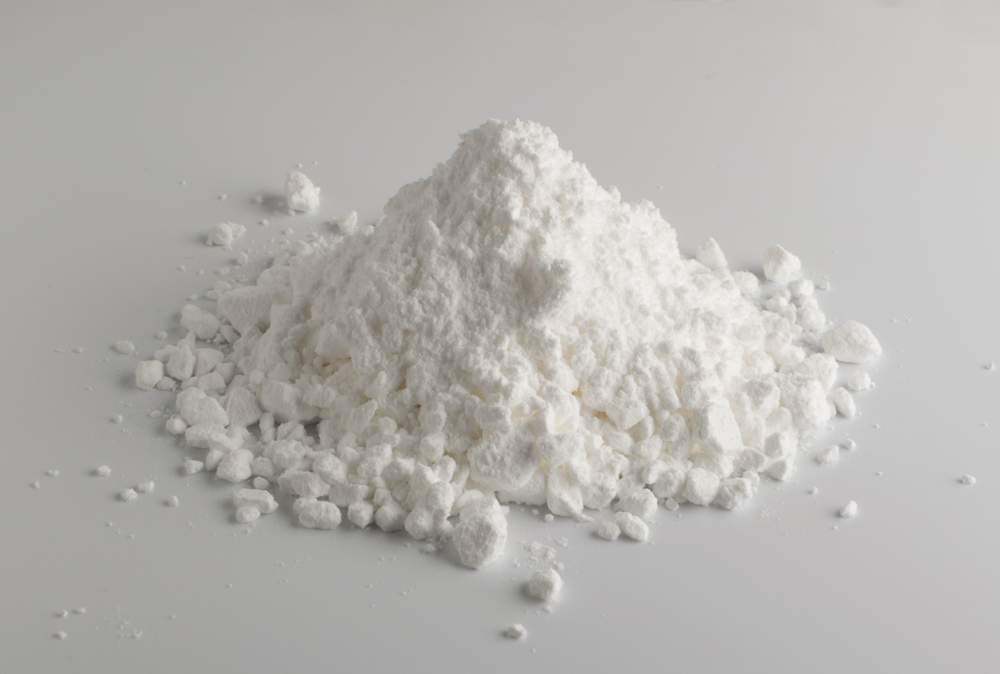
Using plaster of Paris on the walls
1. POP Punning
Apartment walls are often uneven. You might have been told that a layer of POP punning would help to even out the surface. What your painter will essentially do is to apply a slurry of POP paste on the walls and smoothen it out using a trowel. Once it has dried, they will use fine sandpaper to get a near-perfect satin-smooth finish on the walls.
2. POP Textures
Creating textures is another innovative way of hiding imperfections in the walls. It can be done using POP paste and some basic tools. When the POP is still wet, designs can be created using a comb, a trowel or even some bunched up jute fibre. This textured surface can be painted in solid colours. Or it can just be whitewashed for a rustic country cottage effect.
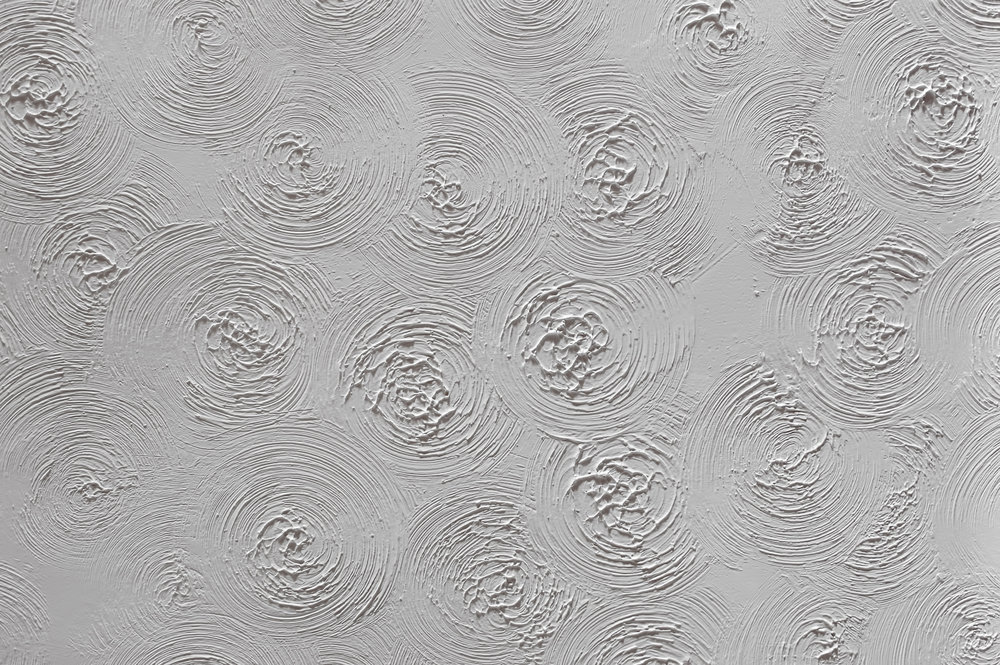
3. POP Murals
A POP mural can be a stunning showstopper on a focus wall in your living room. It can also add some lovely visual relief above the headboard of your bed.
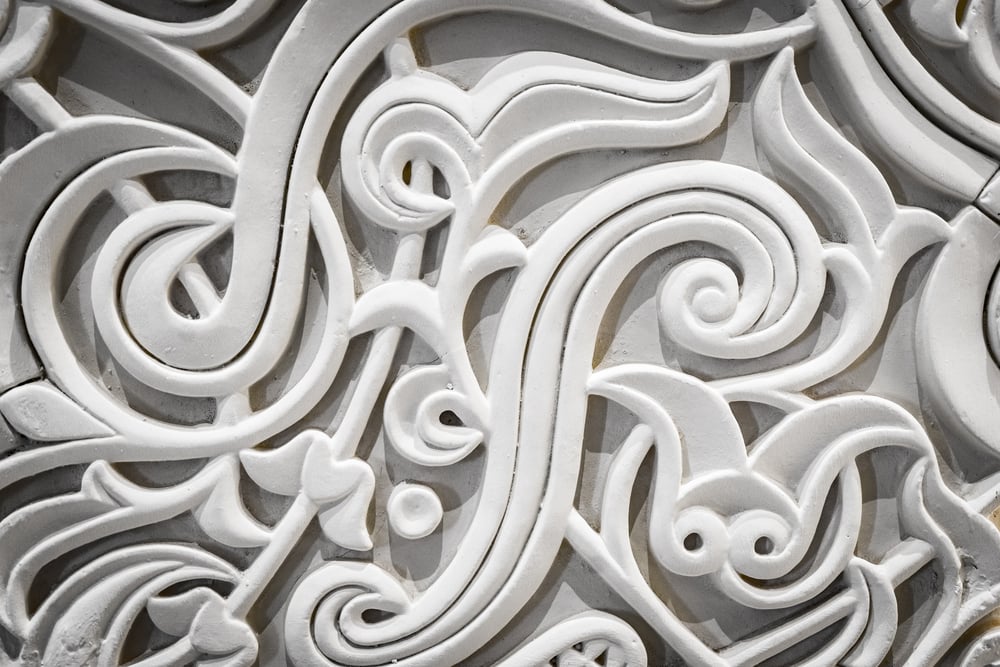
4. POP Niches
You can also experiment with creating POP niches. You can place artefacts, or create a partition wall using POP. We love the way this designer has created L-shaped niches. These are backlit and play well with colours to create interest!
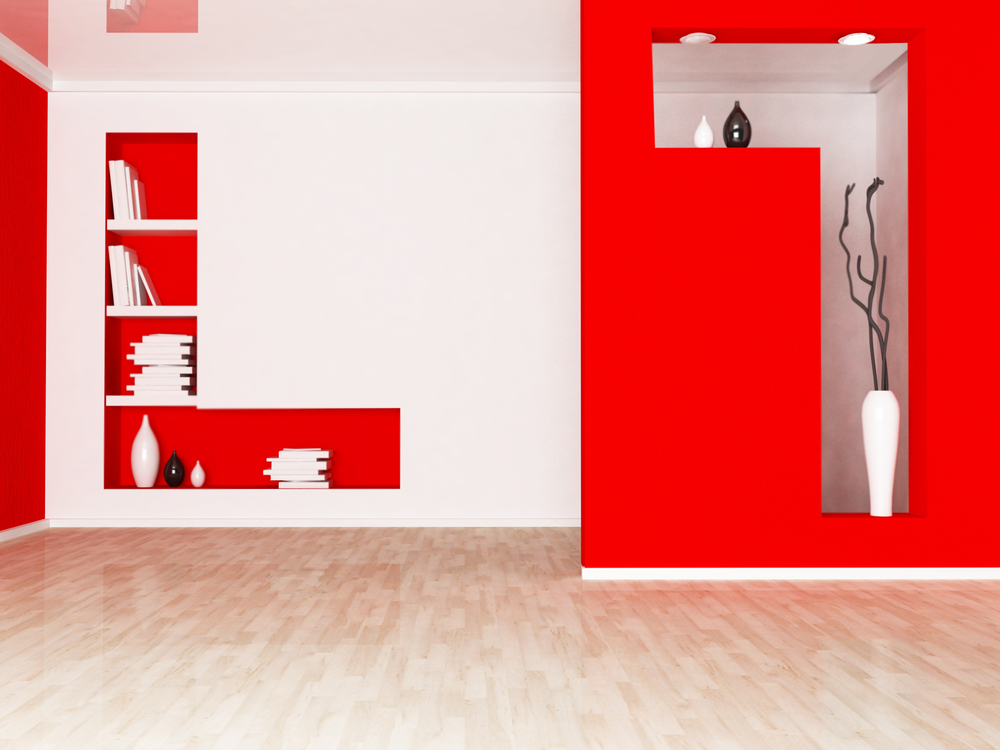
5. POP Cornice Work
POP cornices are often used at the junction between the wall and the ceiling. These add a rich and elegant look to the room. The cornices are created using a pre-set mould and are fixed using screws. POP can be easily cut to the exact length required. The edges can be trimmed and finished seamlessly by filling the gaps with POP slurry.
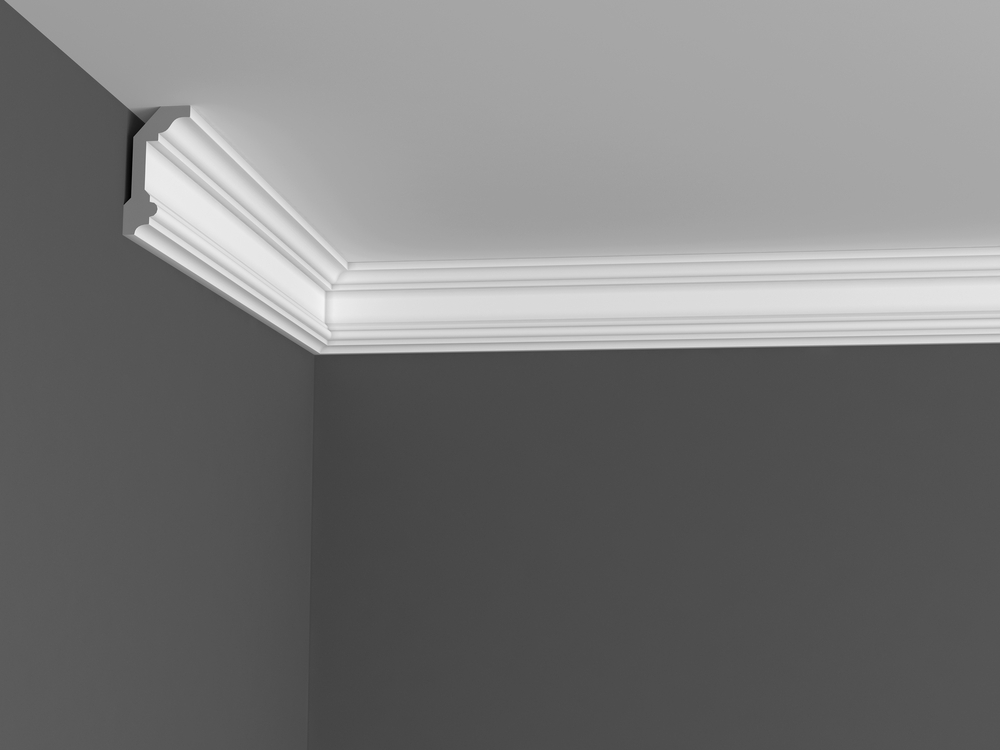
6. POP Pilasters
Pilasters are decorative elements. They add a rich traditional look to classically themed décor. Like cornices, these designs are custom-created using special moulds and assembled together at the site. Once the POP has dried, the surface can be smoothed and finished by painting in any colour.

7. POP Mouldings
When using two colours in the walls or ceiling, the demarcation between the colours can be defined using POP mouldings. Patterns like below can be created by affixing POP panels on the surface. Or the designs can be worked into the surface using a trowel and chisel.
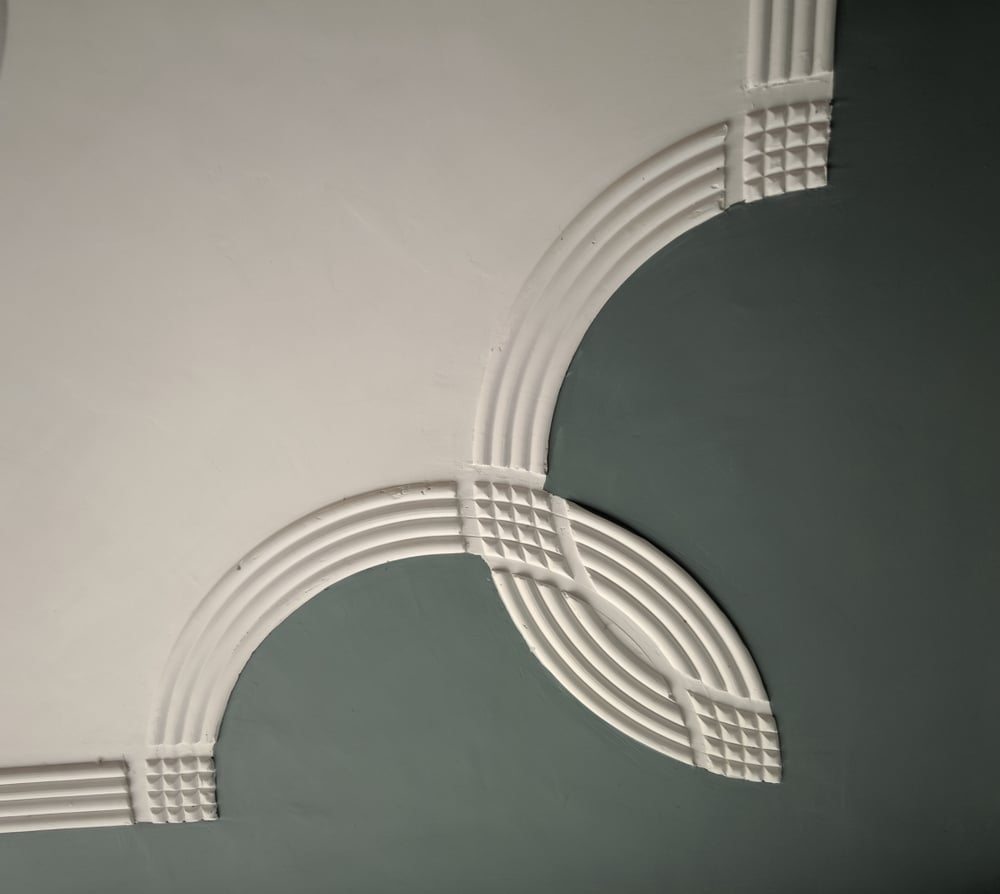
8. POP in Pooja Rooms
POP cornices, mouldings, pilasters and ornamental latticework are used to embellish pooja mandapas. As POP can be shaped and moulded easily, it can be easily adapted into any kind of decorative design. This makes it the preferred material for any kind of artistic additions to the Pooja room.
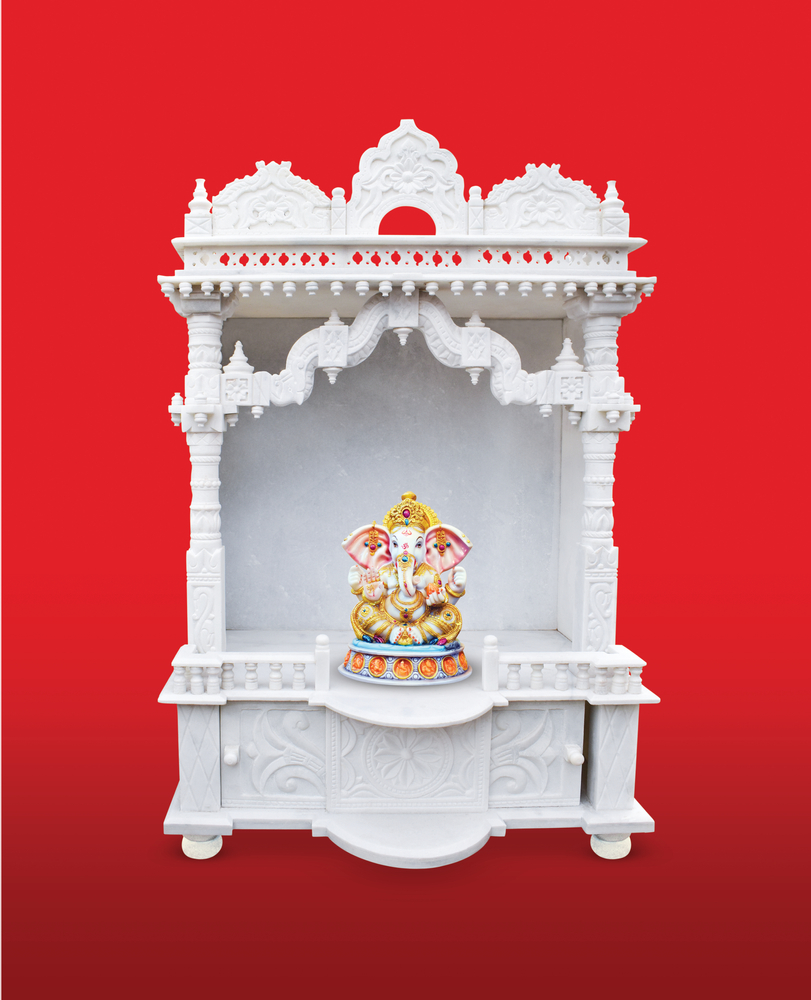
Using POP on Ceilings
1. Hidden Lighting in Bedroom Ceilings
Soft, hidden lights in the false ceiling are a great way to create a soothing atmosphere in the bedroom. This designer has played with different levels using POP shapes in the ceiling. He has used a combination of tiny spotlights and hidden strip lights to create a soft glow.
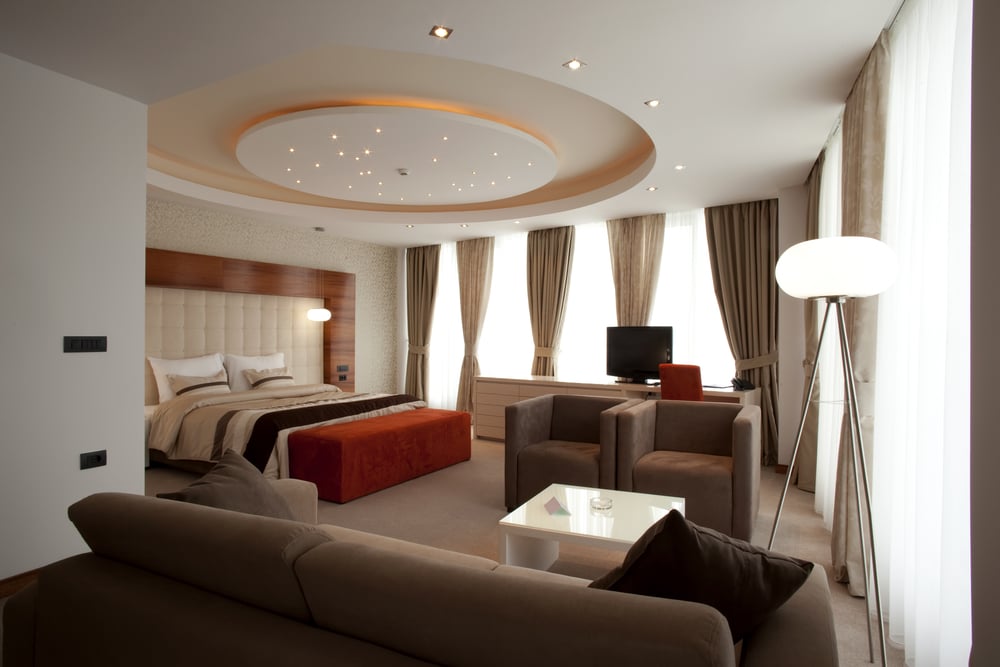
2. Richly Patterned Ceilings
POP relief work adds a touch of artistry to a mundane ceiling, creating focal interest and drama. The same patterns can be continued on the walls to create a coordinated theme.

3. POP Deep Tray Ceiling
A tray ceiling allows lighting at various levels. It transforms a plain ceiling into a dramatic one. You can consider painting it in different colours to highlight the levels and create an altogether striking effect.
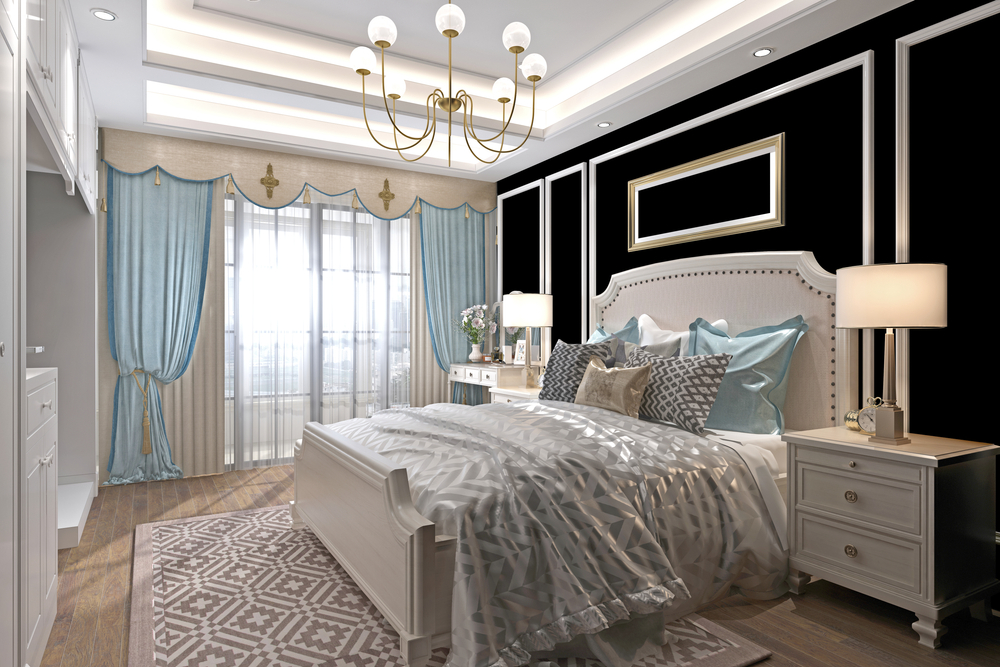
4. Hide AC Vents and Lighting Wiring
POP ceilings can be used for functional as well as aesthetic reasons. The space above the ceiling can be used to mask service lines in air conditioning ducting and electrical wires. They also provide thermal insulation and add a level of soundproofing to the room.
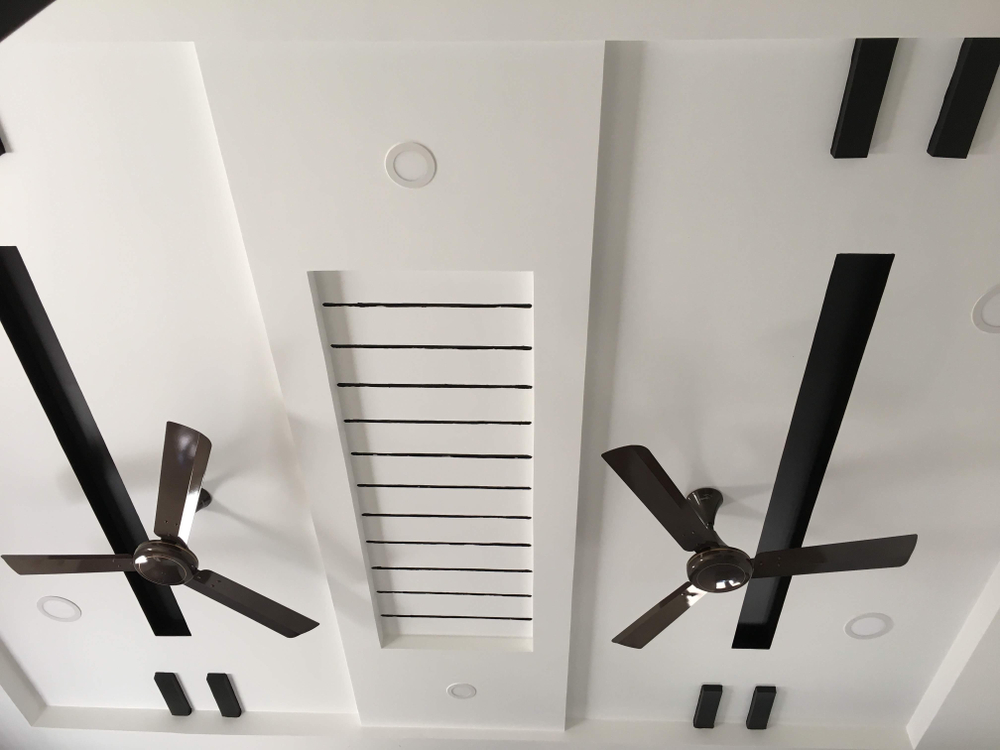
5. Plaster of Paris Coffer Ceilings
When working with ceilings, POP can be used to accentuate shapes, provide cove lighting, or create various levels. This upscale living room décor is elevated by the coffered ceiling made of POP. It is embellished with deep cornices and hidden lighting.
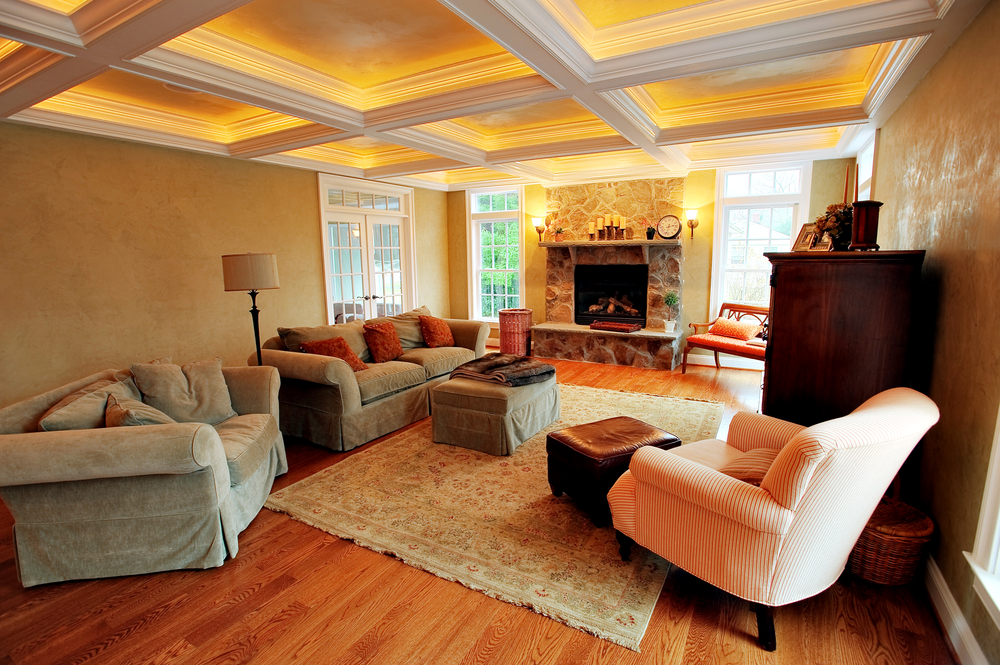
Your Plaster of Paris ceiling or wall design can be custom created to match your décor preferences, functional needs and colour palette. If you want to elevate the aesthetics of your décor, a POP design is a way to go! For more ideas and design suggestions, connect with the HomeLane team.
Plaster Of Paris Design Bedroom
Source: https://www.homelane.com/blog/a-guide-to-plaster-of-paris-designs-for-your-home/

